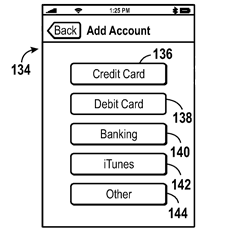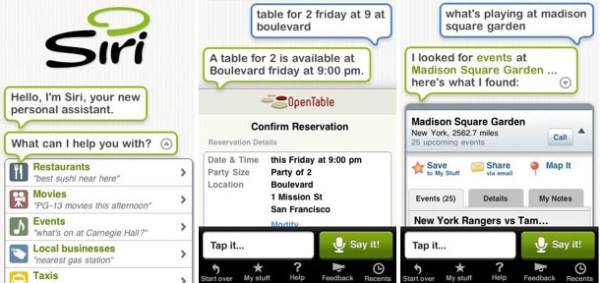This summer, Apple is expected to launch its next iPhone, and new reports describe it as a “completely redesigned handset” as well as a “total rethink from a design standpoint.” To start, the iPhone 5’s internals will be different – the device will run on a new, combined CDMA/GSM/UTMS chipset from Qualcomm, which will support both AT&T and Verizon here in the U.S., as well as other carriers worldwide – perhaps even an expanded lineup, as would now be possible. Along with the iPad 2, this chipset change represents the transition away from Infineon as the iPhone and iPad chipset maker. Going forward, Qualcomm will make the chips for all Apple mobile devices.

But as of this morning, it seems that the most notable thing about the iPhone 5 is not a sum of its features but the fact that it will be a major iPhone launch that will occur without Steve Jobs’ daily presence. Although the ailing Apple CEO stated via press release this a.m. that he will continue his role during his medical absence, COO Tim Cook will be in charge of day-to-day operations at Apple.
Consider the iPhone 5’s 2011 launch as Apple’s dry run for a future without Steve Jobs at the helm. Can it still be “magical?”
From the sound of the note, there’s no reason to expect this is any short-term illness for Jobs. He writes that “Tim and the rest of the executive management team will do a terrific job executing the exciting plans we have in place for 2011” so he can focus on his health. Jobs previously had pancreatic cancer and received a liver transplant in 2009, so this news is not surprising. However, it’s decidedly upsetting, both from a financial point of view and from the point of view from of someone who has upheld the CEO as one of our era’s greatest visionaries.
But for now, let’s just focus on the iPhone 5. Without Jobs’ daily involvement, Apple execs may be launching the most impressive device yet, if our suspicions play out. Here’s what we know so far:
Details on iPhone 5 are Minimal
An Engadget exclusive from last week cites “reliable sources” in detailing the latest rumors about the upcoming iPhone 5 and iPad 2. The iPhone is currently being tested by senior staff on Apple’s campus, it said. But even the sources aren’t giving out details on what the phone will be like, only saying it’s a “compete redesign.”
However, we can put together a list of Apple’s latest acquisitions, hires and patents to start giving us an idea of the iPhone’s future.
iPhone 5 Expected to Support NFC
For starters, a 2010 Apple hire of a notable NFC (near field communication) expert Benjamin Vigier and the filing of several related patents, including one for a mobile payments service, suggest that the next iPhone will include an NFC chip inside – the same technology that Google’s latest flagship Android phone, the Nexus S, has now. With Android’s newest release, Android 2.3 (code-named Gingerbread), support for NFC has been built-in.

This short-range, high frequency wireless technology allows for data exchanges between two devices in close proximity to each other. It will soon form the basis of Google (and others’) upcoming mobile payments initiatives.
But Apple, too, appears to have plans in this area. Patents point towards ideas for things like iPay, iBuy and iCoupons, all of which suggest Apple is building some sort of mobile wallet.
iPhone 5 Becomes Intelligent, Thanks to Siri?
Among Apple’s other high-profile acquisitions was April 2010’s buyout of Siri, a personal mobile assistant that was spun out of SRI International, and whose core technology came from a DARPA-funded artificial intelligence project called CALO. Siri was transformed into an iPhone application that could listen to questions either spoken aloud or typed in and then provide answers. At first, the focus was on the sort of out-and-about questions you may have, e.g. When does that movie show? What Chinese restaurants are nearby? Can I get a table at my favorite Italian place? What’s the phone number for a taxi company?
Only a few months post-acquisition, the app was updated to integrate results provided by the computational knowledge engine, Wolfram Alpha. For those unaware, Wolfram Alpha is a new sort of search technology which can provide factual answers to questions, as opposed to a list of search results. It currently consists of 10 trillion-plus pieces of curated, objective data from primary sources, and it can perform calculations on the fly – over 50,000 types of algorithms and equations are now possible.
With this sort of technology built into Apple’s next iPhone, assuming that’s the case, the device could easily go head-to-head with Google Android’s voice search and voice actions, the former which directs you to results from related Google Search properties and the latter which helps you perform actions on your phone, including sending text messages, routing a trip on a map, pulling up a map of nearby attractions or businesses, launching the phone’s music player to play a certain song or artist and more.

Will iPhone 5 up the feature set of its competitor? It’s likely. One of the interesting things about Siri is that it integrates with third-party data sources like OpenTable for restaurant reservations and Yelp for local business listings. Those services, incidentally, also exist as iPhone apps. What if Apple tied together this new voice interface to the device not only with the services themselves, but could also direct you to the appropriate app to learn more? You would then have a whole new interface for locating and launching apps – a search engine of sorts, even, where the focus isn’t on what app name you need to find (as iPhone’s native search does today), but on what action you need to take.
iPhone 5 Ships with “Cloud iTunes?”
Another Apple acquisition from April 2010, was Lala.com, a cloud-based music streaming service. No doubt this talent-hire was for the purpose of gaining insight and knowledge into the details of building a solid music streaming service like the popular, but now defunct, Lala.

iTunes, the centralized repository of music, videos, apps and more is quickly becoming outdated as new streaming-only services crop up left and right. Some, like Rdio, provide access to your own content library along with 7 million or so digital tracks while others, like MOG, forgo access to your own tracks entirely, offering only its catalog of 10 million songs. Rdio and MOG, as well as Napster, Rhapsody and (the still-yet-to-launch stateside) Spotify, are reasonably priced subscription services where around $10 a month provides you with all-you-can-eat access to music.
Apple has never offered a subscription model for iTunes, but with the Lala acquistion, that appears to be in its future. With iPhone 5, you may be able to purchase, download and stream everything from your phone, no desktop software required, and all for one low monthly fee.
iPhone 5 to Offer Facial Recognition?
In September, Apple acquired facial-recognition firm Polar Rose, whose technology was previously used in a consumer-facing service that automatically tagged your Facebook and Flickr photos with your friends’ names. While speculation at the time focused on how Apple could use the facial recognition to improve its desktop products like Aperture and iPhoto, there’s no reason why it would ignore its mobile products.

Integrating facial recognition into the iPhone could mean a device that knows its owner, for example, and unlocks the phone just for them. Or whose photos are automatically tagged with the names of friends and family, which are then synced to iPhoto on the Mac.
Can Apple Execs Deliver Jobs’ Vision for iPhone 5?
In summary, that’s a very smart smartphone we’ve just described: one that knows who owns it, unlocking just for them, one that can listen and respond to your questions, that can provide factual answers or point you to a related mobile app, one where your music library (and maybe more) is stored online, one that includes NFC for mobile payments, and one that works on whatever carrier you choose. Frankly, that sounds downright magical.
Steve Jobs has long been a visionary for this industry, and his ideas and creations have dramatically impacted how people interact with technology. iPhone 5, assuming it offers all the above, could do that yet again. ?But we’ll have to see if Apple can pull it all off without Jobs’ day-to-day presence at Apple.
Note: Originally, this article stated the iPhone 5 could be the first to launch without Jobs’ daily involvement. This is incorrect. The iPhone 3GS launched in June 2009. Jobs was on medical leave during the first part of that year.

















